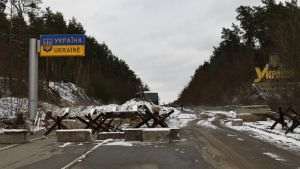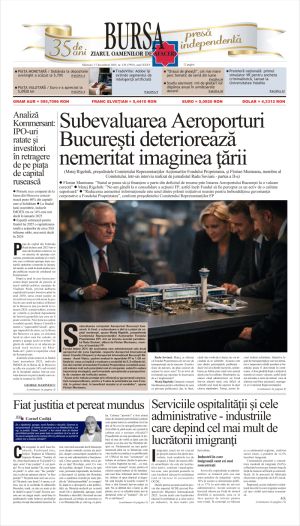Castra Arutela in Călimăneşti, the most well-known Roman fortification in Vâlcea County, will be added to the UNESCO list, alongside other military constructions along the southern border of Roman Dacia, on the old Olt Road. Local authorities have also announced a project for its development with European funds. The Roman fort in the Vâlcea resort town is part of the Limes Alutanus, a line of fortifications built by the Romans along the Olt River to defend against invasions by barbarian tribes. According to the representatives of the Vâlcea County Cultural Directorate, it has already been investigated and demarcated this summer by a commission of British archaeologists from UNESCO.
The archaeological research of the British team was conducted as part of the national program "LIMES," which aims to include the Roman boundaries on Romania's territory in the world's heritage. Florin Epure, the director of the Vâlcea County Cultural Directorate, stated, "Arutela is part of this Limes Alutanus and was built in 137-138. This is known from an army unit, Suri Saggitari, which left us two inscriptions stating that this fort was built during the reign of Emperor Hadrian as we see it positioned there, because we must say it was reconstructed. The gateway was reconstructed in the 1980s to rebuild a fort, according to all the descriptions found so far, as all Roman forts were built according to the same typology. You can see the divisions with the respective rooms, the room where the craftsmen were, where the soldiers who guarded the fort were located, and where they kept the horses. However, there are also earth remains from the construction of this fort, which, as we know, was destroyed due to the flooding of the Olt River during a flood in the mid-3rd century and was abandoned."
In addition to Arutela, there are many such Roman military constructions in Vâlcea, including Pontus Aluti in the Ioneşti commune, the Roman Buridava in Stolniceni, the city of Râmnicu Vâlcea, Castra Traiana in Sânbotin, the Dăeşti commune, and Praetorium I and II in Racoviţa, also on the UNESCO list. Among these, only the Călimăneşti fortification is visible, with its ruins brought to the surface at the end of the 19th century following work to connect the mineral springs in the area. The Călimăneşti fort was also well-preserved after being restored in the 1980s under the coordination of specialists from the Military Museum in Bucharest. Authorities in Călimăneşti say that adding the fort to the UNESCO heritage list is a good thing that will certainly help them further enhance this historic monument. They already have a European-funded development project. Mayor Florinel Constantinescu stated, "This is a rehabilitation project under the Major Infrastructure program, which we accessed, given that this objective is a historic monument. Certainly, next year, we will begin the enhancement of this project. There are various opinions about the last works carried out to rehabilitate the fort, so we have accessed funds to rehabilitate them, and I want to tell you that all the works will be done under the supervision of the Limes commission, the one that proposed the entry of these objectives into the UNESCO heritage. So, under the command or under the advice of archaeology commissions, all these things will be done by specialists, not by any company, and this time I hope to meet all the requirements of those who know this field." The mayor of the Vâlcea resort town noted that the project is valued at around 2.5 million euros, and the financing contract has already been signed. The works that will be done in the area mainly involve creating a tourist information point and potentially a projection room, but only if the Ministry of Culture approves these works. According to the Vâlcea County Cultural Directorate, including these Roman castra in the UNESCO indicative list will have a beneficial effect on archaeological research in the county, especially for local tourism. In addition to the fortifications in Vâlcea, the indicative UNESCO list also includes other sites from the Roman period in Olt, Dolj, and Gorj counties.





























































